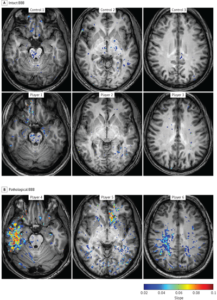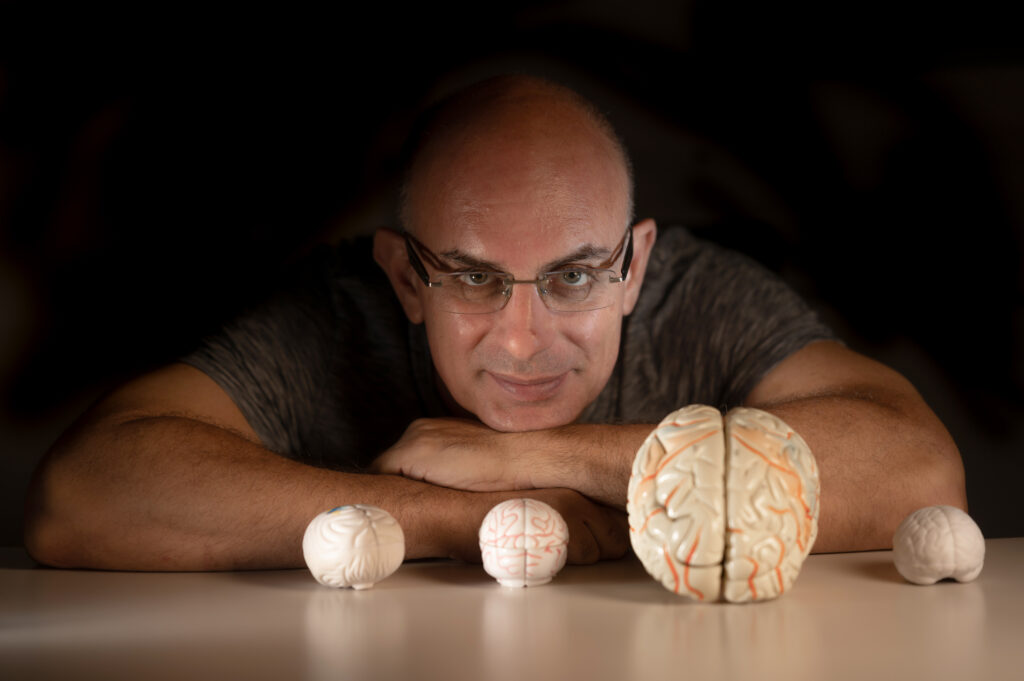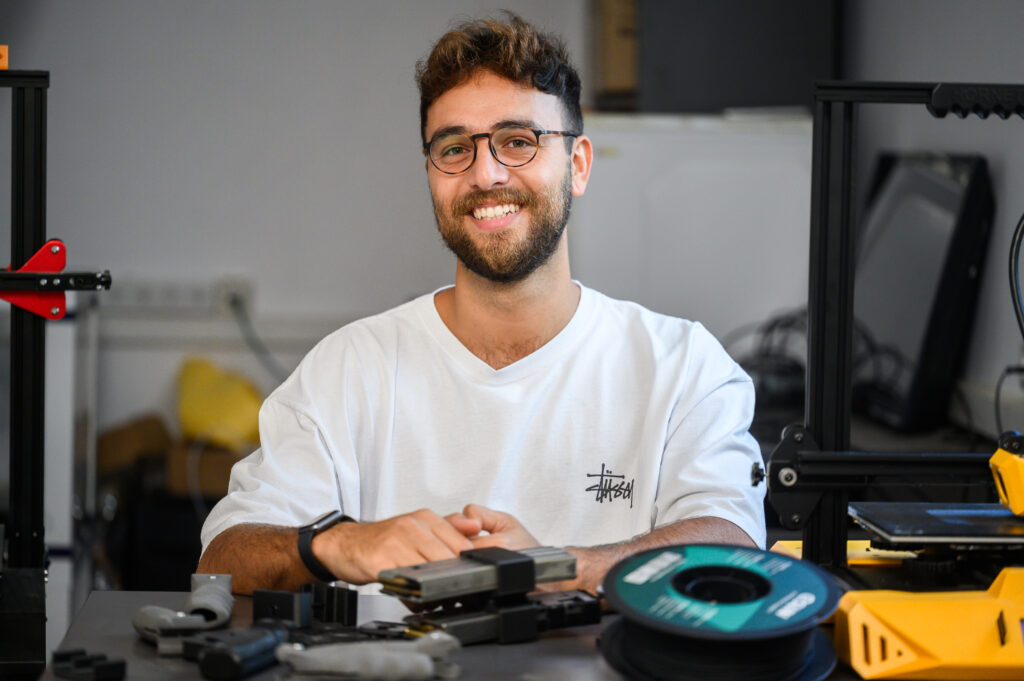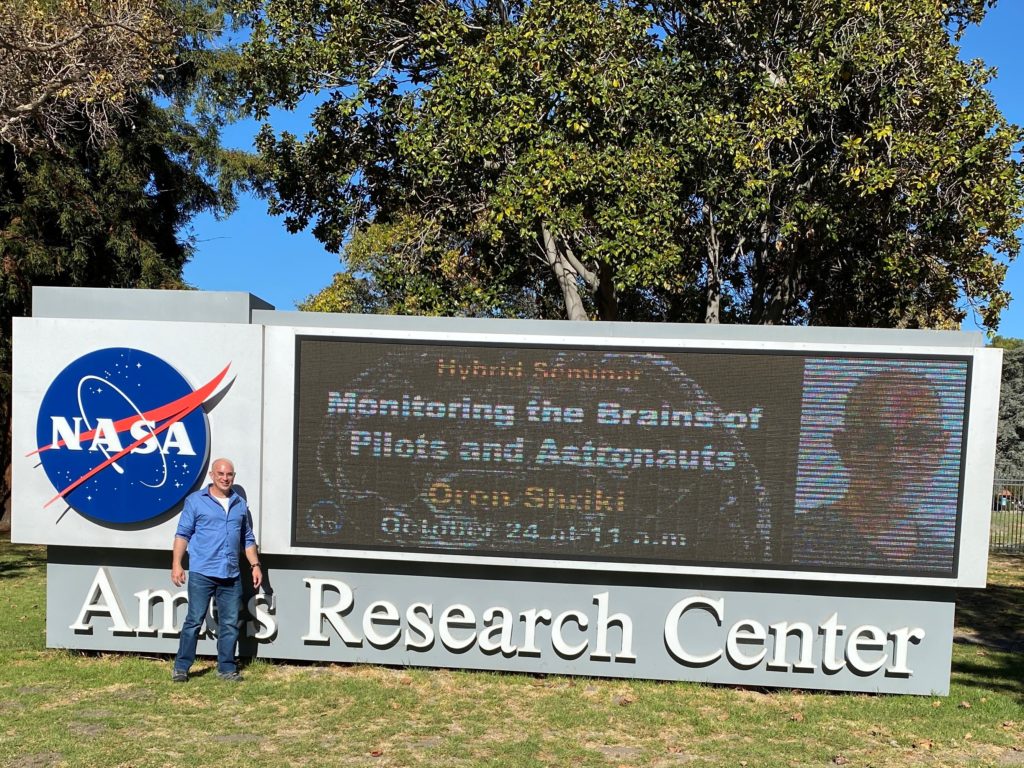
Test Detects Early Brain Damage in Football Players
Test Detects Early Brain Damage in Football Players
November 24, 2014
Medical Research, Press Releases
New Contrast-Enhanced MRI Developed by BGU Visualizes Brain Injury in the Blood-Brain Barrier Offering Significant Diagnostic Capabilities
BEER-SHEVA, ISRAEL, November 24 , 2014 – A new, enhanced MRI diagnostic approach was, for the first time, able to identify significant damage to the blood-brain barrier (BBB) of professional football players following “unreported” trauma or mild concussions. Published in the current issue of JAMA Neurology, this study could improve decision making on when an athlete should “return to play.”
According to Prof. Alon Friedman, from the Ben-Gurion University Brain Imaging Research Center and discoverer of the new diagnostic, “until now, there wasn’t a diagnostic capability to identify mild brain injury early after the trauma. In the NFL, other professional sports and especially school sports, concern has grown about the long-term neuropsychiatric consequences of repeated mild Traumatic Brain Injury (mTBI) and specifically sports-related concussive and sub-concussive head impacts.”
The paper, published by researchers at Ben-Gurion University of the Negev (BGU) and Soroka University Medical Center, describes a new diagnostic approach using Magnetic Resonance Imaging (MRI) for detection and localization of vascular pathology and blood-brain barrier breakdown in football players.

The images from the Ben-Gurion University of the Negev JAMA Neurology study represent Blood-Brain Barrier (BBB) Permeability in Football Players (A) vs. a control group (B). The players in the pathological-BBB group (B) presented focal BBB lesions in different
cortical regions including the temporal (player 4), frontal (player 5), and parietal (player 6) lobes. Both gray and white matter were involved.
“The goal of our study was to use our new method to visualize the extent and location of BBB dysfunction in football players using Dynamic Contrast-Enhanced Magnetic Resonance Imaging (DCE-MRI) on a Phillips 3-T Ingenia. Specifically, it generates more detailed brain maps showing brain regions with abnormal vasculature, or a ‘leaky BBB.’ ”
Study participants included 16 football players from Israel’s professional football team, Black Swarm, as well as 13 track and field athletes from Ben-Gurion University who served as controls. All underwent the newly developed MRI-based diagnostic.
The DCE-MRIs were given between games during the season and revealed significant damage.
Forty percent of the examined football players with unreported concussions had evidence of “leaky BBB” compared to 8.3 percent of the control athletes.
“The group of 29 volunteers was clearly differentiated into an intact-BBB group and a pathological-BBB group,” Friedman explains. “This showed a clear association between football and increased risk for BBB pathology that we couldn’t see before. In addition, high-BBB permeability was found in six players and in only one athlete from the control group.”
Friedman also explains that not all the players showed pathology. This indicates that repeated, mild concussive events might impact some players differently than others. This level of diagnosis of individual players can provide the basis of more rational decision making on “return to play” for professionals as well amateurs of any age.
“Generally, players return to the game long before the brain’s physical healing is complete, which could exacerbate the possibility of brain damage later in life,” says Friedman.
A decade of research in the BGU Laboratory for Experimental Neurosurgery has shown that vascular pathology, and specifically dysfunction of the blood-brain barrier (BBB), plays a key role in brain dysfunction and degeneration, and may be an underlying cause of neurodegenerative complications after brain injuries.
The BBB is a highly selective permeable membrane that separates circulating blood from extracellular fluid. It protects the brain by preventing many dangerous substances from penetrating, and therefore is not meant to be damaged.
Medical researchers, including Friedman’s group at BGU, are working to find ways to find drugs that will target the BBB and facilitate its repair, allowing for the prevention of Alzheimer’s disease and other brain-related disease.
“Prof. Friedman has been able to conduct this breakthrough brain research using the state-of-the-art MRI machine donated as a result of contributions from American Associates, Ben-Gurion University of the Negev (Americans for Ben-Gurion University),” explains Doron Krakow, Americans for Ben-Gurion University executive vice president. “We believe that with continued support, Prof. Friedman and the DCE-MRI can help render more accurate and informed decisions by athletes and others exposed to mild concussions about when to resume activities.”
Other members of the research team include BGU Ph.D. candidates Itai Weissberg and Ronel Veksler, who developed the new imaging method. Lyn Kamintsky, Rotem Saar-Ashkenazy and Dan Z. Milkovsky conducted the study. Dr. Ilan Shelef, BGU lecturer and a member of the Department of Medical Imaging at Soroka University Medical Center also contributed.
This study was supported by the European Union’s Seventh Framework Program (FP7/2007-2013; grant agreement 602102, EPITARGET to Dr. Friedman) and the Israel Science Foundation (grant 713/11 to Dr. Friedman).
Click here for more information about brain research at BGU >>
ABOUT AMERICANS FOR BEN-GURION UNIVERSITY
By supporting a world-class academic institution that not only nurtures the Negev, but also shares its expertise locally and globally, Americans for Ben-Gurion University engages a community of Americans who are committed to improving the world. David Ben-Gurion envisioned that Israel’s future would be forged in the Negev. The cutting-edge research carried out at Ben-Gurion University drives that vision by sustaining a desert Silicon Valley, with the “Stanford of the Negev” at its center. The Americans for Ben-Gurion University movement supports a 21st century unifying vision for Israel by rallying around BGU’s remarkable work and role as an apolitical beacon of light in the Negev desert.
About Ben-Gurion University of the Negev
Ben-Gurion University of the Negev embraces the endless potential we have as individuals and as a commonality to adapt and to thrive in changing environments. Inspired by our location in the desert, we aim to discover, to create, and to develop solutions to dynamic challenges, to pose questions that have yet to be asked, and to push beyond the boundaries of the commonly accepted and possible.
We are proud to be a central force for inclusion, diversity and innovation in Israel, and we strive to extend the Negev’s potential and our entrepreneurial spirit throughout the world. For example, the multi-disciplinary School for Sustainability and Climate Change at BGU leverages over 50 years of expertise on living and thriving in the desert into scalable solutions for people everywhere.
BGU at a glance:
20,000 students | 800 senior faculty | 3 campuses | 6 faculties: humanities & social sciences, health sciences, engineering sciences, natural sciences, business & management, and desert research.
For all press inquiries, please contact:
James Fattal, J Cubed Communications
516.289.1496



